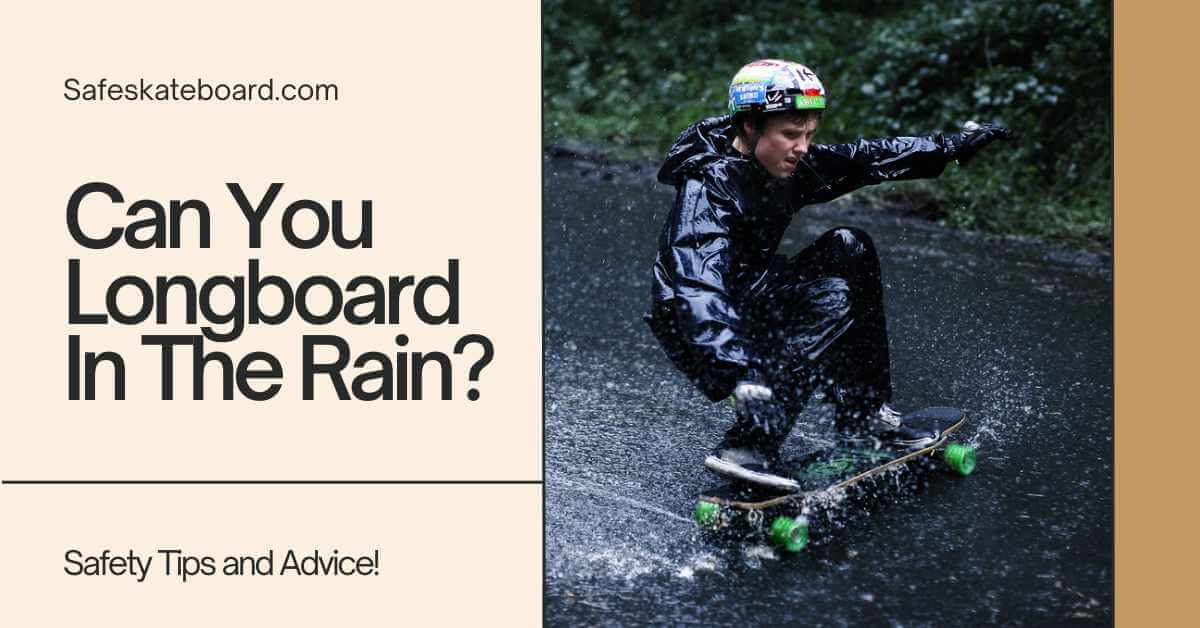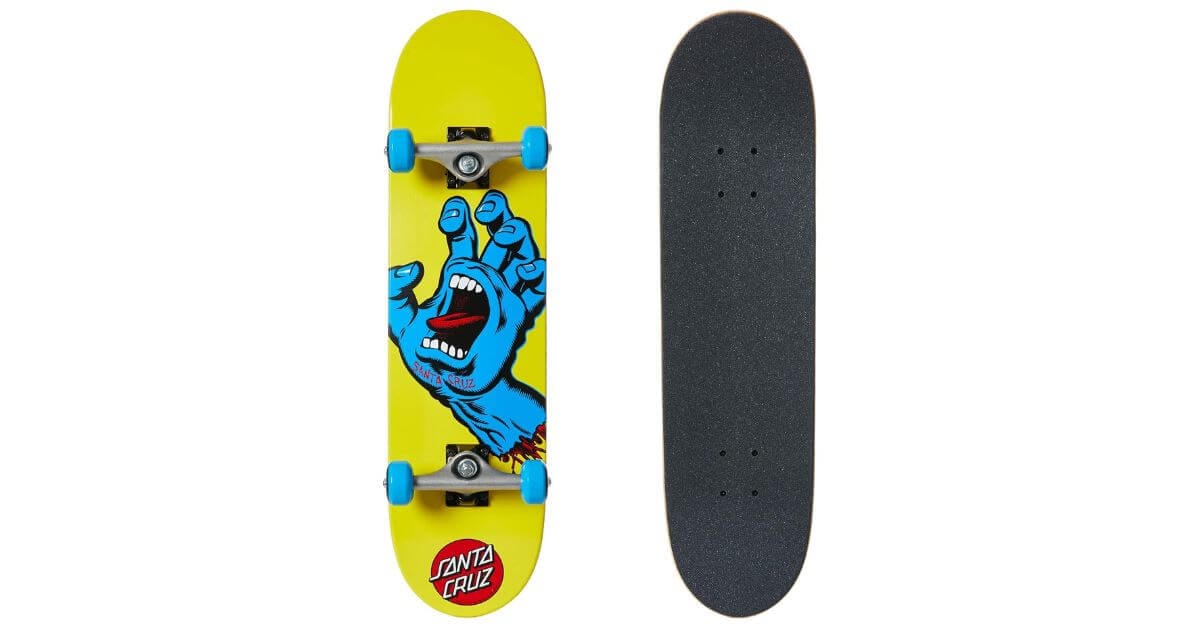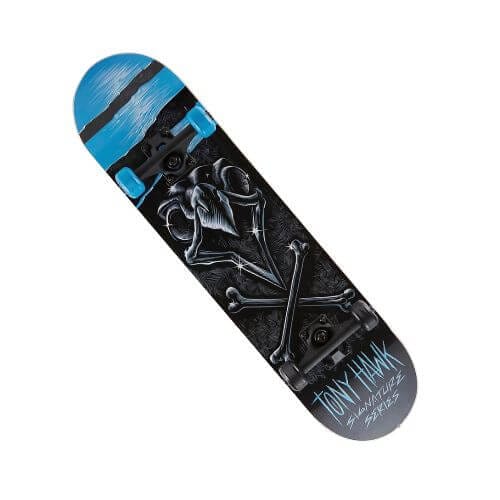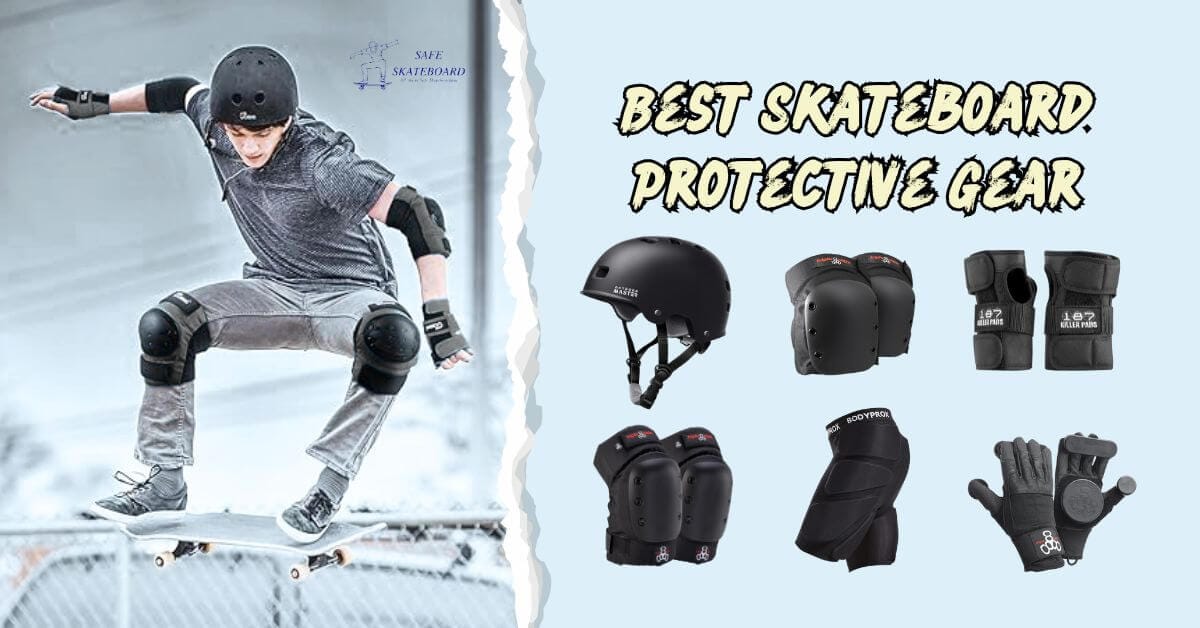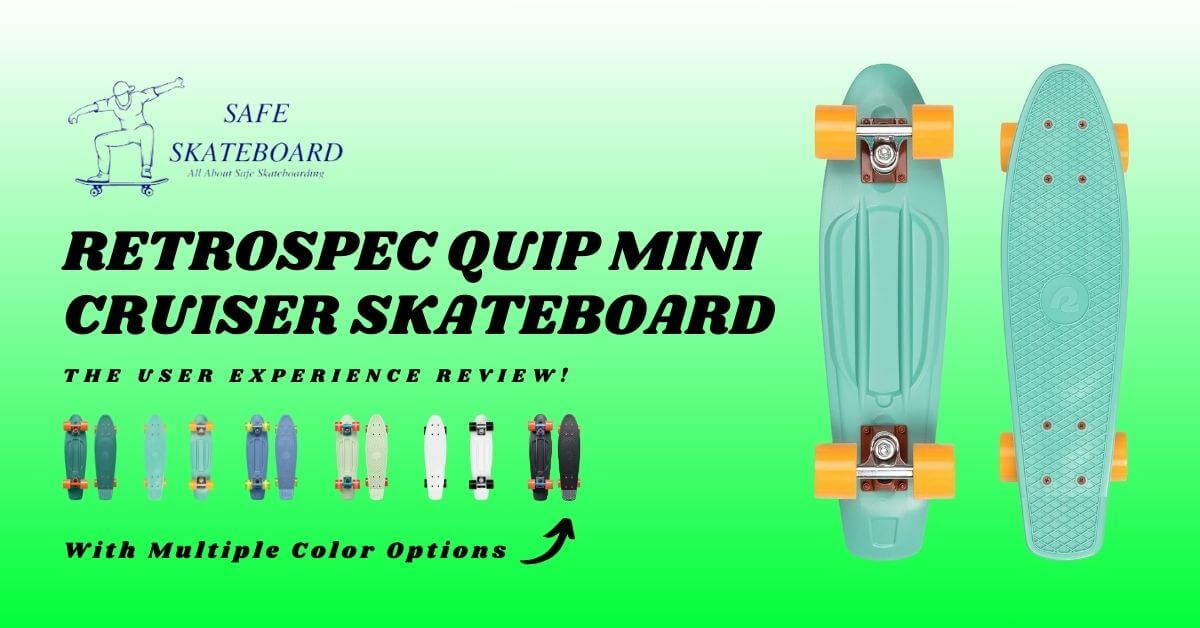Longboarding in the rain can seem exciting, even fun. But it’s not that simple. Wet roads can mess with your grip, damage your board, and make falls more likely. While some thrill-seekers might embrace the challenge, longboarding in wet conditions can lead to risky situations.
In this guide, you’ll learn the truth about riding in the rain. We’ll talk about the risks, how to protect your board, what gear to use, and how to stay safe. This guide will help you decide what to do when the skies turn gray.
Are you ready to dive into the article? Let’s break it down!
Is Longboarding in the Rain Risky?
Longboarding can be an exhilarating experience, but when it rains, many riders wonder if they should hang up their boards. Let’s explore below:
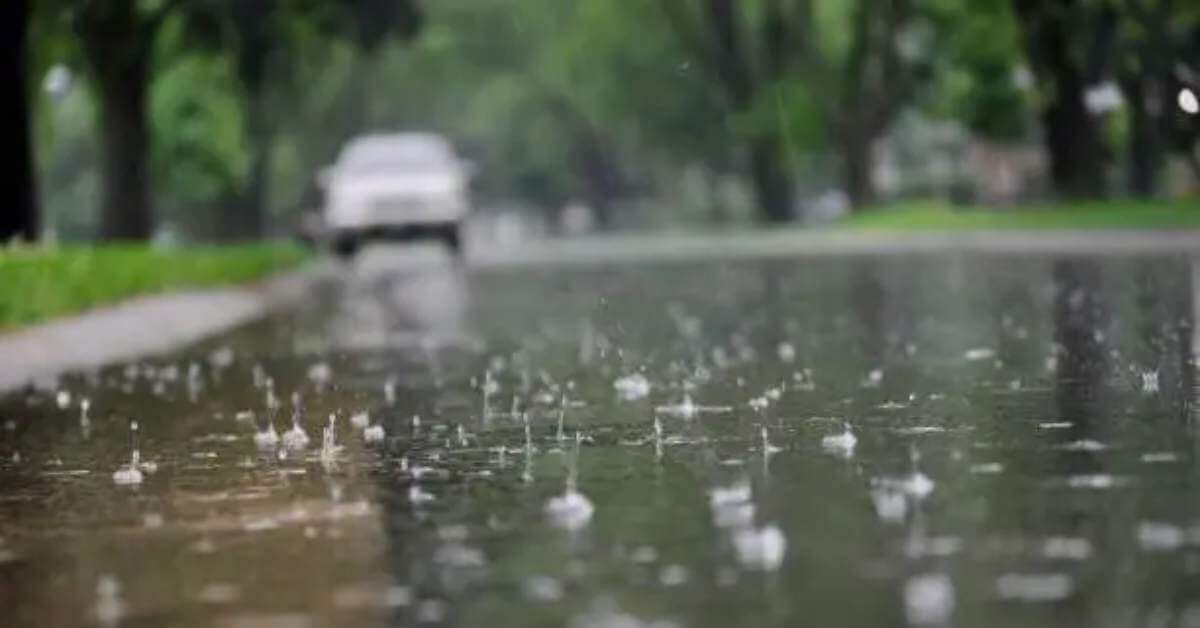
Understanding the Risks when Riding a Longboard in the Rain
There are certain risks involved. Wet surfaces can lead to decreased traction, making it harder to maintain your balance. Slipping is a much higher possibility, especially if you’re riding downhill.
I remember one rainy day when I decided to take my longboard out. It was fun at first, but after a quick turn, I found myself sliding uncontrollably and landed on my side. A hard lesson learned!
Key Factors to Consider
- Surface Materials: Concrete can be slick when wet, while asphalt has a bit more grip.
- Speed: High speeds can amplify the risk of slipping.
- Rider Experience: The more proficient you are, the better you can manage the challenges.
By understanding these risks and approaching rainy rides with caution, you can enjoy the thrill of longboarding, even when the weather isn’t perfect!
Waterproofing Techniques For Wet Conditions
When tackling the question of Can You Longboard In The Rain, one essential strategy is waterproofing your setup. Let’s dive into some effective techniques:
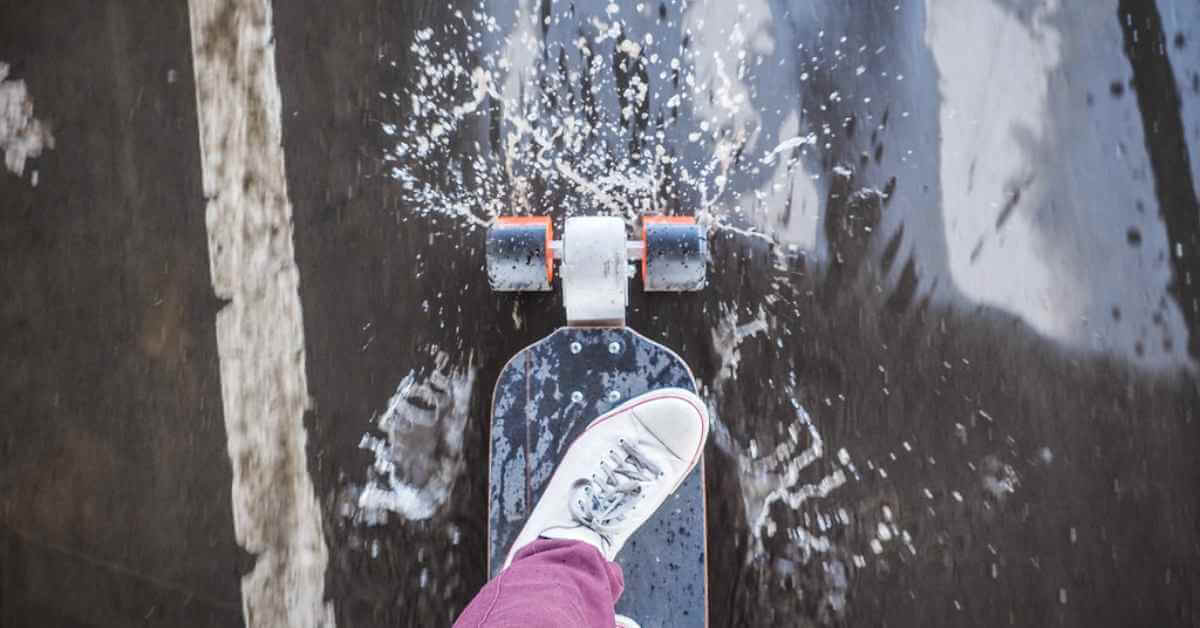
Using Waterproof Sealants
Applying waterproof sealants is a fantastic way to protect your longboard from moisture. I remember one rainy day when I decided to give it a shot—my board felt so much more stable afterward!
- Choose the right sealant: Look for products specifically designed for wood or decks.
- Application: Make sure to follow the instructions carefully, applying evenly across all surfaces.
- Drying time: Give enough time for the sealant to cure before you hit the streets again.
Protective Measures for Bearings
Bearings can be the Achilles’ heel of your longboard when rain hits. To keep them in top condition:
- Use rubber-sealed bearings: These can withstand moisture better than standard ones.
- Regular maintenance: Clean and lubricate your bearings after riding in wet conditions to prevent rust.
- Quick drying: After your ride, wipe them down with a towel and let them air dry.
By incorporating these waterproofing techniques, you’ll be ready to enjoy a thrilling ride, even under gloomy skies!
Longboarding Safety Precautions in Wet Conditions
Longboarding in wet conditions can be exciting, but it requires heightened awareness and safety measures to avoid accidents. Let’s explore these safety guides:
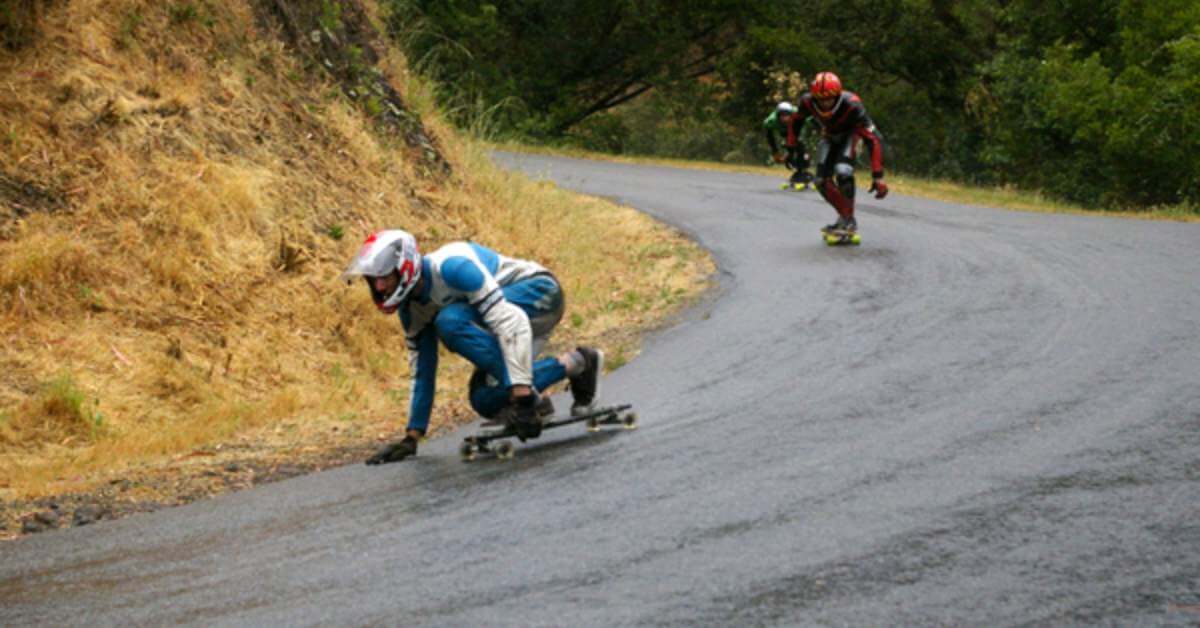
Braking Techniques on Slippery Surfaces
When longboarding in the rain, mastering braking techniques becomes crucial. Sudden stops can lead to falls, so it’s essential to approach braking with caution. A gentle foot brake is your best ally in wet conditions. Here’s how you can practice safe stops:
- Shift Weight Back: Lean back slightly to maintain balance as you slow down.
- Gradual Pressure: Apply your foot to the tail slowly, avoiding abrupt movements.
- Use Edging: If you feel your board sliding, try to edge by leaning to one side to regain control.
I’ve found that practicing these techniques on dry pavement helped enormously when the rain started pouring.
Avoiding Puddles and Standing Water
Navigating puddles can be a challenge and should be avoided whenever possible. Here are some tips to stay safe:
- Scout Ahead: Keep an eye on the road and anticipate any large puddles.
- Ride with Awareness: Be ready to maneuver out of water hazards swiftly.
- Stay in Control: Slowing down your longboard before approaching puddles can help you handle unexpected splash zones.
Remember, beneath those puddles can be hidden bumps or slick spots that could throw you off balance. Keeping a keen awareness while riding will ensure you enjoy the thrill of longboarding, even on a rainy day!
Maintenance Tips for Rainy Days
When you’re out longboarding in the rain, keeping your board in peak condition is essential. Let’s dive into how to care for your ride after those wet adventures.
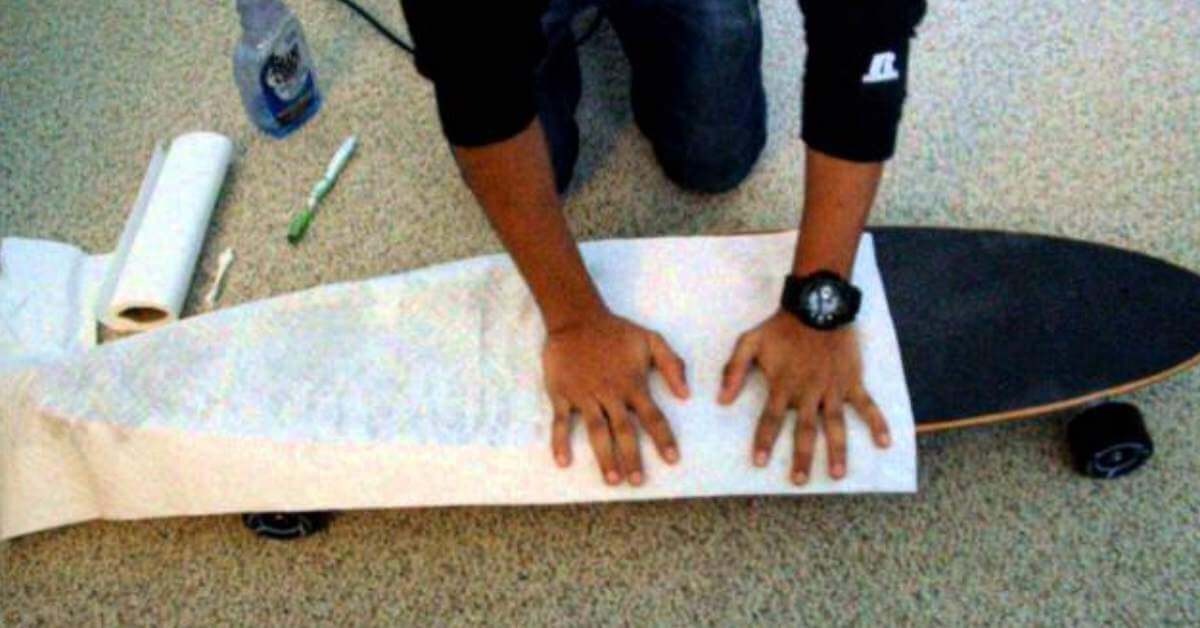
Drying and Cleaning after you ride a Longboard in the Rain
Once you’ve finished riding, the first step is drying and cleaning your board. Moisture can wreak havoc on your deck and components. Here’s what I do:
- Wipe Down: Use a soft cloth to wipe off any excess water. Focus on the deck, trucks, and wheels.
- Drying Time: Let your board air dry completely in a well-ventilated area. Avoid heat sources as they can distort materials.
- Regular Cleaning: A damp cloth usually does the trick for light dirt. For stubborn grime, mix a mild soap solution and give it a good scrub.
Inspecting for Water Damage
After drying, it’s crucial to inspect your board for any signs of water damage. Pay attention to:
- Deck: Look for warps or delamination.
- Bearings: Spin the longboard bearing to check for rust or grinding sounds.
- Grip Tape: Ensure it hasn’t lost its stickiness or developed mold.
If you spot any issues, it’s better to address them sooner rather than later – keeping your board in tip-top shape will guarantee many more exciting rides ahead!
Frequently Asked Questions (FAQ) About Can You Longboard In The Rain
How Does Rain Impact the Grip on a Longboard Deck?
Rain can make a longboard deck slippery, reducing your foot grip and making it harder to stay stable, especially during sharp turns or tricks. Wet grip tape loses its effectiveness, increasing the chances of your feet slipping off the deck.
What Effect Does Rain Have on Wheel Grip While Longboarding on Concrete?
Rain reduces wheel grip on concrete, making the surface slick and more challenging to ride on. Water decreases traction, which can cause wheels to slide out unexpectedly, especially during high-speed rides or quick turns.
Can a Longboard Get Wet?
Yes, a longboard can get wet, but it’s not ideal. Water can damage the deck, especially if it’s made of wood, leading to warping, cracking, or delamination. Moisture can also seep into other components, affecting overall performance.
Will Water Harm Your Bearings When You Longboard In The Rain?
Yes, water can harm your longboard bearings. Exposure to moisture can cause rust and corrosion, making the bearings less smooth and reducing their lifespan. This can lead to a rougher ride and potential bearing failure.
Is There an Ideal Longboard Setup for Wet Weather Riding?
Yes, for wet-weather riding, choose wheels with a softer durometer and deeper grooves for better traction on wet surfaces. Use coarse grip tape to enhance foot stability. Opt for stainless steel or ceramic bearings, which are more resistant to rust and water damage.
What Safety Measures Should You Take When Longboarding in the Rain?
To stay safe, ride at a slower pace to maintain control, avoid sharp turns, and always wear protective gear like helmets and pads. Wear bright or reflective clothing to enhance visibility. After riding, dry your board and check for any damage, cleaning and lubricating bearings to prevent rust.
Summing It Up
As I have explored, longboarding in the rain can be both exhilarating and risky. While it might feel like an adventure, the wet conditions demand caution and preparedness.
Having personally longboarded through drizzles, I can attest that it’s all about finding joy in the ride while respecting the elements.
Embrace safety and maintenance measures to keep your board in top shape. Whether you choose to glide through puddles or avoid them, the ultimate goal is to enjoy the ride responsibly. Happy longboarding!
